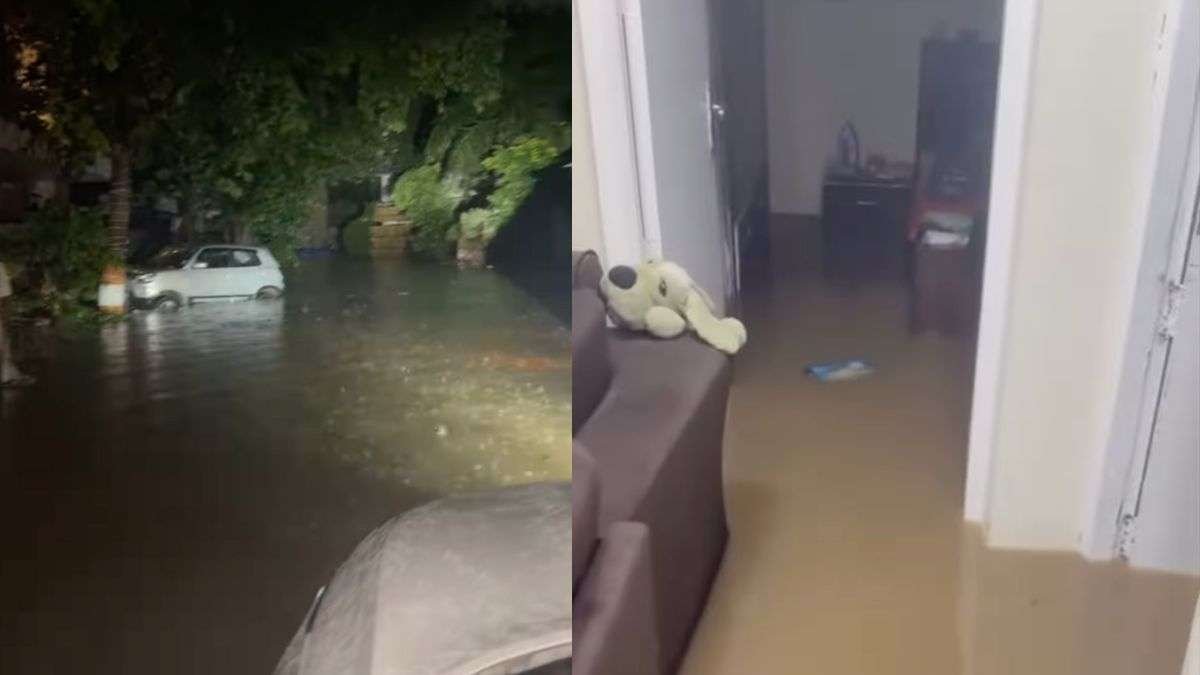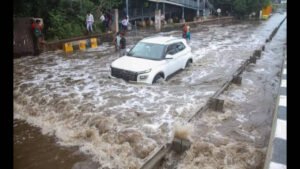When the elite neighbourhoods of Gurgaon began flooding during recent heavy rains, residents discovered their luxury apartments offered little protection against nature’s fury. The posh apartments reel under waterlogging as India’s millennium city faces another infrastructure crisis that exposes the gap between promises and reality.
The Exclusive Enclaves Under Water
Imagine waking up to find water seeping through your premium apartment’s foundation. Residents of Gurgaon’s most expensive residential complexes found themselves dealing with exactly this nightmare scenario. The flooding affected areas known for their upscale amenities and premium pricing.
These developments marketed themselves as offering world-class facilities and modern infrastructure. However, when monsoon rains arrived, the reality became starkly different. Water accumulated in basements, lobbies, and even individual units across multiple high-end projects.
Power Outage Compounds the Crisis
The situation worsened when electrical systems failed across affected areas. Residents faced dual challenges of standing water and complete darkness. Elevators stopped working, trapping some residents on upper floors while others struggled to evacuate through flooded stairwells.
Emergency backup systems proved inadequate for extended outages. Many buildings lacked proper drainage infrastructure despite their premium status. The power failures lasted hours in some complexes, leaving residents without basic amenities they expected from luxury living.
Infrastructure Failures Behind the Facade
Several factors contributed to this urban flooding disaster:
- Poor drainage systems unable to handle heavy rainfall
- Blocked storm water drains due to construction debris
- Inadequate city planning that prioritized development over flood management
- Insufficient backup power systems in residential complexes
The irony strikes residents particularly hard given the premium prices they paid. Many moved to these developments specifically to avoid the infrastructure problems plaguing older parts of the city.
Resident Experiences Paint Grim Picture
Stories from affected residents reveal the stark contrast between marketing promises and ground reality. Families found themselves ankle-deep in muddy water inside their homes. Some reported damage to expensive furnishings and electronic equipment.
Children became scared as water levels rose throughout the night. Parents struggled to keep their families safe while dealing with property damage. The psychological impact extends beyond immediate physical inconvenience.
Waterlogging Exposes Planning Gaps
The extent of waterlogging revealed serious urban planning deficiencies. Gurgaon’s rapid development prioritized quick construction over sustainable infrastructure. Developers focused on maximizing built-up areas rather than ensuring proper drainage.
Natural water bodies were filled to create more construction space. This elimination of natural drainage systems contributed significantly to the current flooding problems. The city’s concrete jungle lacks adequate green spaces to absorb excess rainwater.
Government Response Falls Short
Local authorities struggled to provide effective emergency response. Pumping equipment arrived late at many locations. Coordination between different government departments proved inadequate during the crisis.
Municipal officials acknowledged the infrastructure gaps but offered few immediate solutions. Promises of improved drainage systems have been made repeatedly over the years. However, implementation remains slow and often inadequate.
Financial Impact on Residents
The flooding created significant financial burdens beyond immediate property damage. Insurance claims processes prove complex and time-consuming. Many residents discovered their policies don’t cover all flood-related damages.
Temporary relocation costs added to the financial strain. Some families had to arrange alternative accommodation while their apartments dried out. The indirect costs of lost work days and damaged vehicles further increased the economic impact.
Looking Forward: Lessons Learned
This crisis highlights the urgent need for comprehensive urban planning reform. Future developments must prioritize flood management alongside aesthetic appeal. Residents deserve infrastructure that actually protects their investment.
Citizens are demanding accountability from both developers and government authorities. The incident serves as a wake-up call about the importance of sustainable development practices. Quick fixes won’t solve problems that require a systematic infrastructure overhaul.
Building Resilient Communities
The path forward requires collaboration between residents, developers, and government agencies. Proper drainage systems must become mandatory rather than optional. Emergency preparedness plans need regular testing and updating.
Communities must also advocate for better building codes and enforcement. The current crisis demonstrates that luxury amenities mean little without basic infrastructure reliability. Residents are learning to demand substance over style in their housing choices.
The Gurgaon luxury turns into flooding nightmare serves as a cautionary tale about prioritizing sustainable development over quick profits. Only through comprehensive planning and proper implementation can similar disasters be prevented in the future.












Be First to Comment